Interview with Béatrice Massin by Marina Nordera
Descrizione
BEATRICE MASSIN is a French contemporary choreographer whose work stems from material based on the French Baroque dances of the 17th and 18th centuries.
In her conversation with Dance Historian MARINA NORDERA, they unfold their discussion around four main axes in relation to Massin’s work: personal memories, the transmission of dance knowledge, the relation between history and memory and the body-as-archive. In the early days of her dance training, Massin was exposed to a dance education in ballet and contemporary dance respectful of the individual personality of the dancer and she remains passionate about a kind of training that prompts the dancer to "unlearn", thus to forget, an established technique in favour of individuality and active intersubjectivity in performance.
Her work manifests a strong music-space relationship which acts as a key element in the transmission and actualisation of historical dances inside a collaborative context of mutual trust between choreographer and dancer(s) in the performative process.
QUESTIONS D'ENTRETIEN:
PERSONAL MEMORIES
[00:00:19] Quel est ton premier souvenir de danse?
[00:02:23] Quel est ton premier souvenir d’un danseur ou d’une danseuse qui t’a inspiré?
[00:03:55] Quand as tu commencé à te définir en tant que danseuse?
[00:04:40] Quelles sont les expériences de ta formation de danseuse qui restent dans ta mémoire?
[00:06:35] Qu’est-ce que tu as voulu oublier de ta formation de danseuse?
[00:08:40] Peux-tu préciser les processus du désapprendre par rapport à la mémoire?
[00:09:33] As-tu mis en place des mnémotechniques pour te souvenir de ce que tu as oublié?
[00:10:04] Est-ce qu’il y a une place à la nostalgie quand tu penses à la période de ta formation?
[00:11:55] Est-ce que dans ton travail chorégraphique il y a des éléments autobiographiques?
[00:13:11] Peux-tu revenir sur “Que ma joie demeure” et son lien avec l'autobiographie?
TRANSMISSION
[00:15:31] Quelles sont les formes de transmission que tu as traversé au cours de ta carrière?
[00:17:53] Comment ta manière de transmettre la chorégraphie a-t-elle changé dans le temps?
[00:24:25] Comment se construisent la collaboration et la confiance dans le processus de création?
[00:27:45]Comment faire communauté au sein de ta compagnie de danse?
[00:28:52] Est-ce que tu reconnais le fil de ta transmission dans le travail des danseurs qui ont travaillé avec toi et que maintenant sont eux-mêmes chorégraphes?
[00:30:21] Est-ce que tu es une passeuse de ce que tu as appris auprès de Francine Lancelot aux danseurs avec lesquels tu as travaillé?
RELATION BETWEEN HISTORY & MEMORY
[00:33:52] Comment ton travail intègre-t-il l’histoire de la danse?
[00:36:27] Est-ce que tu regardes aux sources documentaires de la danse baroque comme tu le regardez il y a 40 ans?
[00:39:12] Est-ce que tu t’es détachée des sources en notation Beauchamp-Feuillet?
[00:40:40] Quel est l’outil de mémoire dans la chorégraphie?
[00:42:45] Est-ce que ton faire chorégraphique dans les années est passé du pas à la structure?
[00:43:46] Tu as dit que la mémoire de l’interprète est liée à l’émotion de l’espace. Pourrais-tu en dire plus?
BODY-AS-ARCHIVE
[00:45:49] Quel type de connaissance tu gardes dans ton corps?
[00:49:13] Est-ce que c’est seulement la kinésiologie qui t’a transformé?
[00:51:08] Est-ce que ton corps est une archive des techniques?
[00:52:06] Est-ce que tu as des archives de ton travail?
[00:53:58] Est-ce que tu as du matériel audiovisuel de ton travail?
[00:55:30] Est-ce que tu as élaboré un système de notation pour documenter ton travail chorégraphique?
[00:57:36] Qu’est pour toi la notion de répertoire?
[00:59:36] Est-ce que tu aimes reprendre tes pièces à distance de plusieurs années avec de nouveaux collaborateurs?
[01:00:09] Comment tu travailles à la reprise de rôles?
Luogo/Tempo
Centre National de la Danse, Pantin, France
9 luglio 2022
Formato
video/quicktime (741.64 MB PT1H3M31S)
Soggetto
• Que ma joie demeure ; Mass b ; Requiem-la mort joyeuse ; Buirge, Susan ; Carlson, Carolyn ; Fonteyn, Margot ; Lancelot, Francine ; Nikolais, Alwin ; Nureyev, Rudolf ; Tikhonova, Nina ; CCN / Ballet de l’Opéra national du Rhin ; Maison de la Danse de Lyon (Charles Picq Archives) ; baroque choreography ; community-making (improvisation) ; kinesiology (applied anatomy for dance) ; music-space relation ; notation (Beauchamp-Feuillet)
Lingua:
FranceseDiritti:
© Tutti i diritti riservatiAll materials are owned by Ca’ Foscari University of Venice, project Mnemedance. Any use of the material different from consultation is not possible without the prior written consent of Mnemedance’s supervisor. Interviews may only be reproduced with permission by Mnemedance.







 è un servizio del
è un servizio del